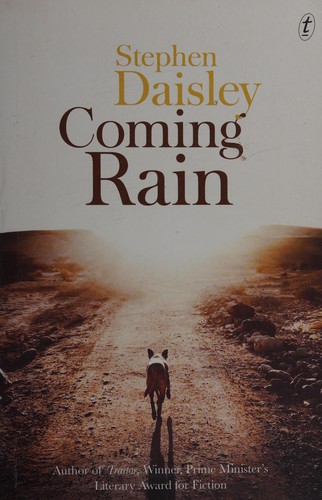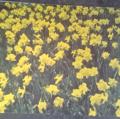Stephanie Jane recenzis Coming Rain de Stephen Daisley
A distinctive style
4 steloj
I received a copy of Coming Rain from its publishers, Text Publishing Company, via NetGalley, in exchange for my honest review.
Set in 1950s rural Australia, Coming Rain has a distinctive style which made it refreshing to read. Daisley frequently uses sentence fragments, but in a way that suits his prose and effectively pushes forward the pace of his story. It's not just poor grammar as in some other novels I have read! He also writes in Australian, presenting explanations of dialect words within the text but not dwelling on the translations. This effectively gives authenticity to the writing and made me feel as though I was discovering a new-to-me culture. Two storylines run in parallel throughout the book. One one hand we have two human drifters, sheep-shearers and general handymen Painter and Lewis, who travel in a clapped-out truck across the Australian desert to isolated farms to shear sheep. …
I received a copy of Coming Rain from its publishers, Text Publishing Company, via NetGalley, in exchange for my honest review.
Set in 1950s rural Australia, Coming Rain has a distinctive style which made it refreshing to read. Daisley frequently uses sentence fragments, but in a way that suits his prose and effectively pushes forward the pace of his story. It's not just poor grammar as in some other novels I have read! He also writes in Australian, presenting explanations of dialect words within the text but not dwelling on the translations. This effectively gives authenticity to the writing and made me feel as though I was discovering a new-to-me culture. Two storylines run in parallel throughout the book. One one hand we have two human drifters, sheep-shearers and general handymen Painter and Lewis, who travel in a clapped-out truck across the Australian desert to isolated farms to shear sheep. On the other hand we have two dingo drifters, a pregnant bitch and an adolescent male, desperately trying to find themselves food, water and safety.
It did take a good chunk of Coming Rain before I really settled in to Daisley's writing style. I understand this is his second novel so I might now look out the first, knowing that I could get more from it by repeating the first pages to get into the flow before continuing on. I frequently found myself distracted too by different subjects running into each other. We might start reading about the dingoes, then move to the men in the next sentence with no break or clue in the text as to the change. I am not sure if these overlaps were deliberate on Daisley's part or if my preview copy hasn't yet been fully edited. However I didn't notice any other typos or publishing weirdness. The device could be intended to highlight the similarities between the humans and animals - their paragraphs and lives being interchangeable - but I just got annoyed at having to keep stepping back from the narrative flow in order to work out what was going on.
The richness of Coming Rain is in the information given in passing. At one point we learn that the man now charged with persuading the dingos to go elsewhere - by firing at them with rifles and shotguns - is the same man who had previously persuaded the indigenous aborigine tribes to leave. It is a given that similar methods applied. We also see repeated examples of derelict white settlements littering this huge empty land and even the sheep farm at which Painter and Lewis finally arrive appears to be a shadow of its former self. The two men sleep in dormitories that could house dozens and only the farm owner's daughter is left to help out. In seeing the violent poverty-stricken lives of Painter and Lewis I was reminded of American novels such as Cormac McCarthy's Suttree or John Steinbeck's Cannery Row and Coming Rain has the same melancholy feel of desperate pride and harsh life. Daisley understands these lives completely and shows them without apology or any softening of the edges.

